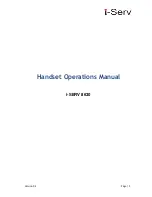
3
The G-70x
™
arm socket is
inserted into the socket block
on the vest.
Adjusting the arm lift angle
Setting your threads is part of basic
operating technique. Two adjustment
screws in the socket block on the vest
and two “rod ends” in the mating section
of the arm determine the angle of lift of
the arm. These two adjustments are your
“threads.” They are personal and critical
for good operating.
Some combination of adjustment of
these screws – and your physique and
posture – will make the arm lift straight
up when carrying the sled. The angles
of adjustment are not directly “in-out”
and “side to side,” but rotated about
30 degrees clockwise (relative to the
operator). We can suggest approximate
threads to start, but the only way to test
your threads is to pick up the sled and see
what happens.
Side to side
For almost all operators, regardless of
body type, the typical adjustment for the
“side to side” screws (the rod ends in
the arm) is 2 to 2.5 turns out on the top
screw and ALWAYS all the way in on the
bottom screw.
The two side to side screws work
independently of one another. Do not
tighten the lower screw, but be sure it is
all the way in, and then back it out 1/8th
of a turn to prevent binding.
In and out
Looking down at the top “in-and-out”
screw. Count the threads indicated by the
arrow. This is a typical adjustment for a
person in reasonable shape.
The “in-out” adjustment on the socket
block varies greatly by the operator’s
body type. If you have big pectorals and
a flat stomach, the top screw is almost
all the way in. If you’ve been eating well
and exercising less, the top screw will be
further out.
Always dial in the top screw first to your
setting, then turn in the bottom screw
until it just snugs up against the fitting.
There is no need to tighten the bottom
screw very hard.
With both pairs of screws properly
adjusted, the camera will float in all
positions with the operator standing
relatively comfortably.
On the arm, pull the “parachute pin,”
flip the mating block, and reinsert the
parachute pin with the kick back link
rotated (see page 6). Note that the mating
block is now reversed; the upper side to
side adjusting screw is now the lower
screw and vice versa.
To set your threads, first dial the lower
side to side screw all the way in, then
adjust the upper screw to your threads
- about 2 to 2.5 turns out. Use the same
procedure to change back to left side
operating.
count
threads
here
Goofy foot
If you want to operate “goofy-foot,” —
with the sled on the right side –you will
need to reverse the socket block.
On the vest, loosen the socket block
height adjustment screws. You may have
to tap the plate hard with your fist to get
everything to release. Flip the plate and
retighten the clamp. Be sure the dovetail
clamp properly mates with the beveled
retainer.
Use a 1/4” allen to adjust the “side to
side” screws. When wearing the rig, be
sure to hold the centerpost in line with
the “in-out” thumbscrews. This will take
the loading off the side to side screws.


























